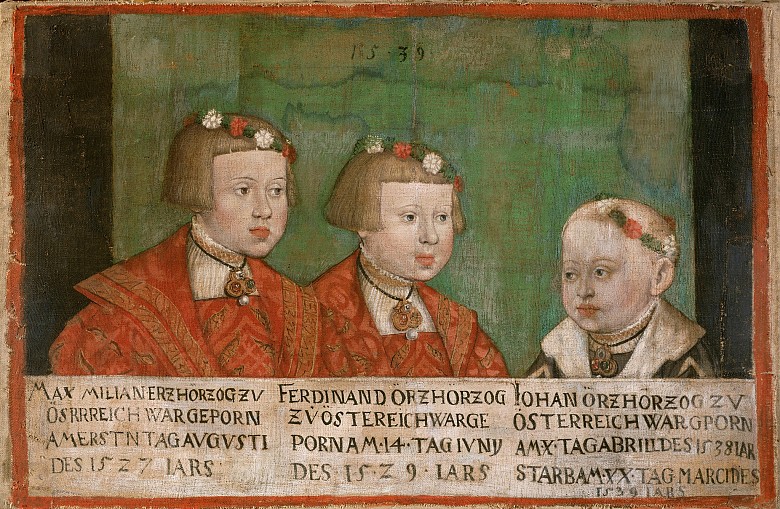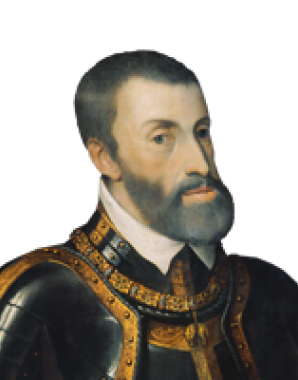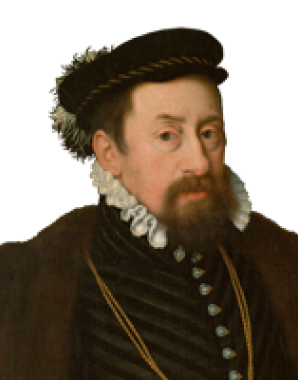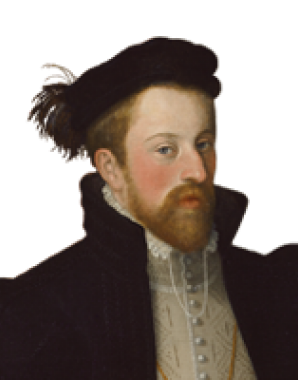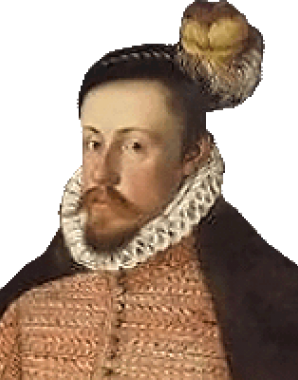Ferdinand I: marriage and offspring
Ferdinand’s marriage to Anna (1503–1547), heiress of the Jagiello dynasty, to which he owed the acquisition of the Bohemian and Hungarian crowns, was preceded by lengthy diplomatic negotiations.
As early as 1504 Ferdinand’s grandfather Maximilian I and Anna’s father, Ladislaus V, began negotiations on a reciprocal contract of inheritance which would apply if one of the dynasties became extinct. The agreement was affirmed by the ‘double wedding’ celebrated in Vienna in 1515. Ladislaus’s son, the nine-year-old Louis, was married to Maximilian’s granddaughter Maria, who was one year older than her husband. In the case of Ladislaus’s daughter Anna, Maximilian found himself in the awkward position of being unable to provide a bridegroom, since he had no power of disposition over his two grandsons Charles and Ferdinand. Thus it was Maximilian who stood before the altar beside Anna as proxy for one of his two grandsons. A compromise agreement was made, whereby if within one year no binding nuptial agreement could be concluded with one of the two Habsburg princes, Maximilian himself, by now twice widowed and fifty-six years of age, would take the twelve-year-old Jagiello princess as his wife.
However, this proved unnecessary as in 1516 the thirteen-year-old Ferdinand was announced as Anna’s husband. The bridal couple did not meet for a further five years, when the wedding took place. Prior to this Ferdinand had been promised the rulership of the Austrian patrimonial dominions by his brother Charles, as the Hungarian Estates would not have accepted a non-ruling prince as a husband for Anna.
With the death of Anna’s brother Louis in the Battle of Mohács in 1526 the advantages of this marriage for the Habsburgs were demonstrated, as Anna was now sole heiress to the crowns of Bohemia and Hungary.
The marriage between Anna and Ferdinand was harmonious, resulting in fifteen children of whom only two did not survive past infancy. Anna herself died from complications arising from the birth of their last child, Johanna, in 1547. Ferdinand subsequently refused to marry again.
Anna became the progenitrix of the Austrian line of the Habsburgs, which was founded by her three sons: the future emperor Maximilian II, Ferdinand of Tyrol and Charles of Inner Austria.
It was to prove difficult to ensure that their ten daughters were provided for and/or married, as the religious schism had drastically reduced the field of dynastically suitable candidates.
The eldest daughter Elisabeth (1526–1545) was epileptic, suffering seizures of such severity that she was repudiated by her husband, the Polish king Sigismund August. As Elisabeth died young, the path was clear for a new attempt at a union with the Polish ruler, on whose territory the Habsburgs were keen to secure an influence. Elisabeth’s younger sister Katharina (1533–1572) had just been widowed following a brief marriage to Duke Francesco III of Mantua, and in 1553 she was married to her former brother-in-law. However, this union was also to prove unhappy and the marriage remained childless. Sigismund August tried in vain to obtain an annulment, and the couple eventually lived apart from 1562. Katharina returned to Austria, spending the rest of her life in Linz.
Anna (1528–1590) married Duke Albrecht V of Bavaria and presided over the court at Munich as a true Renaissance princess. Despite the open rivalry of the two dynasties within the Empire, this union marked the beginning of systematic contractions of marriage between the extended Habsburg and Wittelsbach dynasties that has continued to the present day. These numerous intermarriages have resulted in a union of two families who in genetic terms differ very little from one another.
The marriage arranged for Maria (1531–1581) with Duke William V of Jülich-Cleves-Berg in 1546 was intended to strengthen Habsburg influence in the north of the Empire.
Eleonore (1534–1594) was originally also intended to marry a German elector, but plans to betroth the Habsburg princess to Elector John Frederick I of Saxony came to nothing on account of religious differences. Eleonore eventually married the Italian prince Guglielmo of Mantua.
Italian unions were also arranged for Barbara (1539–1572), who married Duke Alfonso II of Ferrara, and Johanna (1547–1578), who was promised to the grand duke of Tuscany, Francesco Maria de Medici.
The remaining daughters, Magdalena (1532–1590), Helene (1543–1574) and Margarete (1536–1566), took vows of celibacy. No longer affected by their father’s marriage policy after his death, the sisters, together with their brother Ferdinand, decided to found a convent in Hall in Tyrol on the initiative of Magdalena, a deeply pious woman who died with a reputation for sanctity. Opened in 1567, the foundation provided daughters of aristocratic families with a refuge where they could lead a reclusive life of piety in keeping with their rank. Here Magdalena and Helene – Margarete having died before the convent buildings were completed – spent the rest of their lives.
